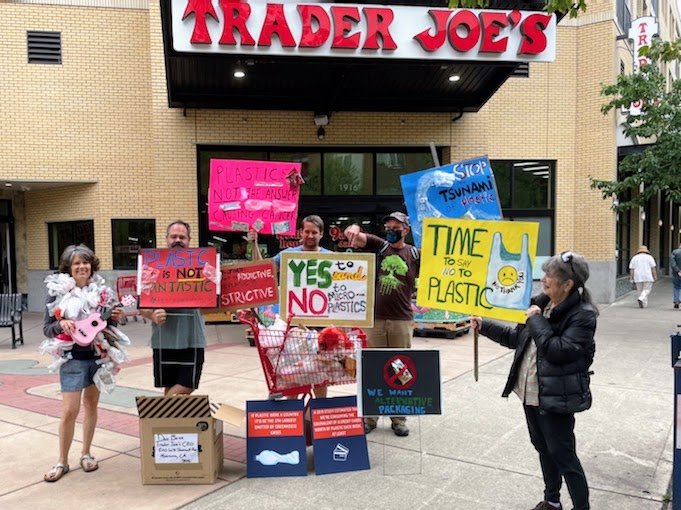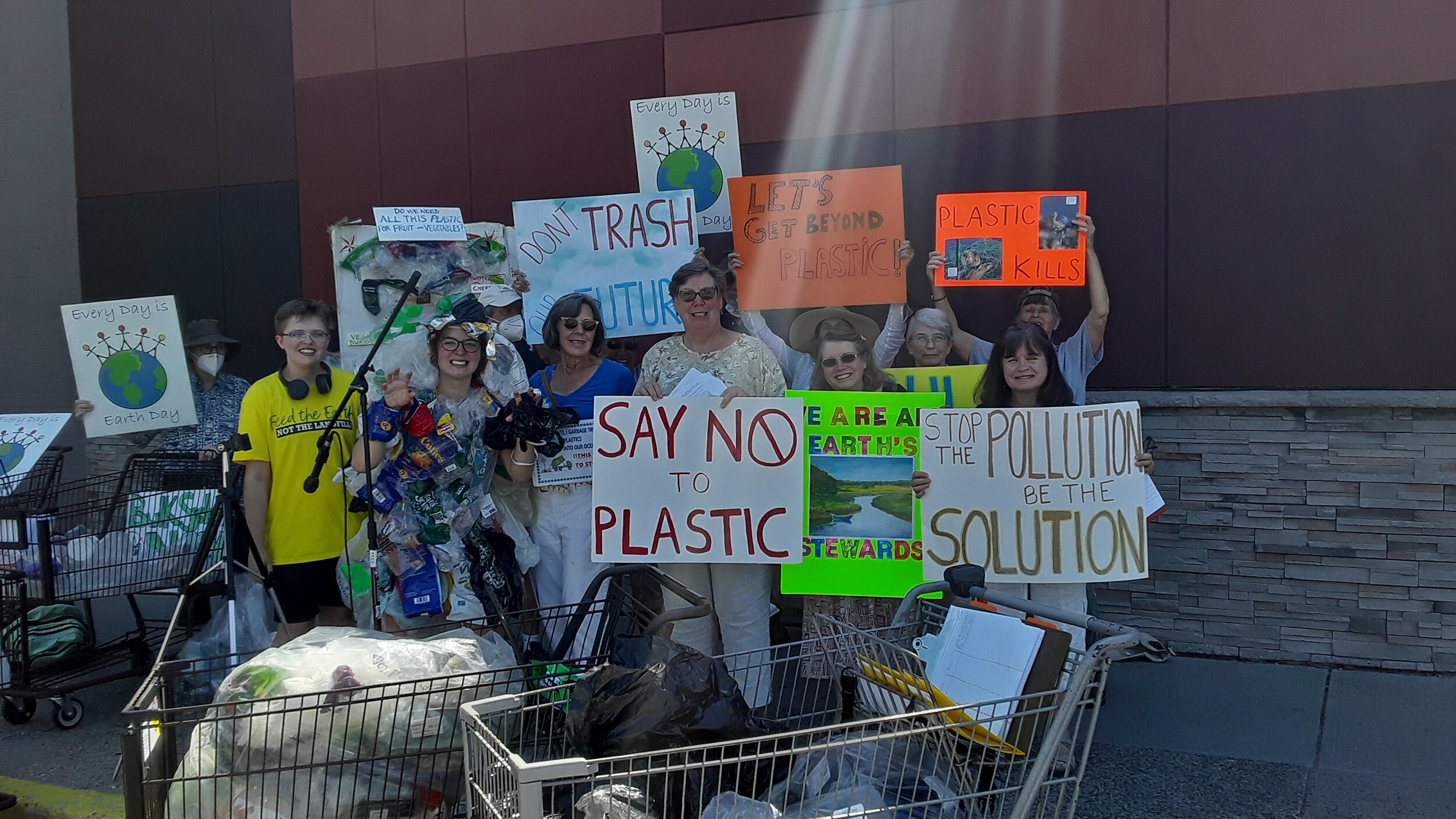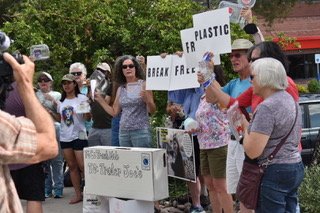Host A Supermarket Plastic Packaging Take-Back
Although polls show that the majority of US consumers want to avoid products packaged in plastic, individuals have no control over the amount of single-use plastic that goes to market. While individual decisions are an important piece of the puzzle, consumer brands and retailers need to curb their reliance on single-use plastic and offer consumers plastic and packaging-free alternatives by:
Selling fruits and vegetables without plastic clamshells, bags, wrappers, and trays. If offering certain items “naked” is not possible, cardboard packaging is a far better alternative than plastic.
Offering dry goods like beans, rice, flour, pasta, cereal, coffee, tea, spices, salt, sugar, and more in bulk and allowing customers to bring their own reusable bags to fill.
Offering personal care items like shampoo, moisturizer and cleaning supplies like laundry powder and dish soap in bulk and allowing customers to bring their own reusable containers to fill up.
Where offering items in bulk is not an option, switching all store brand products to cardboard, paper, glass, and aluminum packaging and selecting name brand products that are packaged in non-plastic alternatives.
Immediately ending the sale of water bottled in plastic and installing water filling stations for customers as well as selling bulk water refills in areas where water quality is an issue.
Take action by hosting a "Supermarket Plastic Take-Back" in which volunteers return used plastic packaging to major grocery chains across the country and call on CEOs to commit to phasing out single-use plastic packaging.
Check out the organizing resources below to get started and don’t hesitate to refer to our detailed guide at any point in the process.
GUIDE
Whether this will be your first in person action or your fortieth, we aim to make it easy and fun. We’ve drafted a detailed, step-by-step guide to walk you through the planning of your plastic take-back and help ensure that your event goes smoothly and has maximum impact.
TEMPLATE LETTER TO STORE CEO
As part of your event, you’ll deliver a letter to the store manager urging the CEO of the store or chain to commit to reducing their plastic packaging significantly. We’ve written a template letter that hits all the important points and includes plenty of relevant statistics and information. For more details on delivering the letter, visit the guide.
EVENT FLIER
A good flier is an important tool to help you promote your take-back! We recommend that you list any co-sponsors on the event flier to give everyone visibility - the more the merrier. You should share the flier with your networks via email and you can also print out copies to hand out ahead of time and place around town. Farmers markets and libraries are both good spots to try, as well as handing them out to shoppers outside the store at which you plan to host your take-back event.
You can customize the event flier using our Canva template as a starting point or you can download a generic PDF flier to either use as is or update using another tool like Photoshop if you’d prefer that. For more details on creating and sharing your flier, visit the guide.
SOCIAL MEDIA TOOLKIT
Social media can be a powerful tool to recruit more participants and raise awareness. We’ve put together sample content you can share on Twitter, Facebook and Instagram as well as some ready-to-use graphics to help promote this campaign. For more details on how and when to work social media into our event, visit the guide.
NEWS ADVISORY AND NEWS RELEASE
In case you’re confused about what the difference between these two things with similar names is, here’s the short version:
A news advisory is a very short, simple document that alerts journalists that there is an event happening, when, and where that highlights any photo opportunities, etc. You should send the news advisory to your media list two days before your event and then, again, on the morning of your event.
A news release is a more detailed document that provides details and quotes from leaders and advocates that journalists can more or less use to draft an entire article from. You should send the news release first thing on the morning of your event.
Reporters are very busy so you should also plan to send individual follow up emails and make calls to anyone you think should or is more likely to attend/cover your event.
We’ve put together a template news advisory and news release to make this easy for you - all you need to do is customize them by adding the details of your own event and location.
For more details on how to make the most of both the news advisory and news release, visit the guide.
Click here to personalize the news advisory and news release templates for your event. >>









